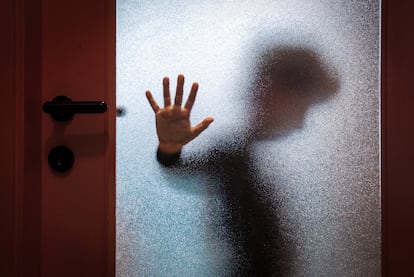Under what conditions do people with a mental disorder become violent?
Saying that violent people are just mentally ill is a premise that condemns innocent people with psychopathological problems and pardons guilty people who are mentally healthy

Violence currently constitutes a public health problem and frequently affects the most vulnerable members of the community, such as minors and women. A well-organized society provides individuals — through family and school socialization and the acquisition of a moral conscience — with integration mechanisms and emotional bonds that protect them from engaging in destructive relationships.
Empathy, as a natural biological commandment, is the most powerful inhibitor against violence and cruelty. Unfortunately, there are some human beings who lack this empathic capacity to react positively to expressions of fear or pain expressed by other people, and who do not have a handbrake to regulate their own destructive tendencies, nor are they able to express emotional discomfort (guilt) for the harm they have inflicted.
Violent behavior is the result of the concrete interaction of individual variables and situational factors. Perpetrators of destructive behavior typically have antisocial personalities, have suffered the humiliation of physical abuse, and have been exposed to the glorification of violence. Specifically, the absence of a father figure or secure attachment relationships encourages the acquisition of low self-esteem and hinders the ability for self-control to learn to modulate aggressive impulses. People who have had these problems in childhood do not develop empathy towards human suffering, may be emotionally insensitive towards others and tend to commit violent acts, especially if they resort to alcohol and drugs.
The influence of violent peers or habitual viewing of violent video games is an important factor, especially when the subjects’ intellectual level is low, they have a dependent personality and have poorly internalized normative values in the family and at school. In short, violent young people have developed, from their family or close environment, a strategy to control the behavior of others based on resorting to violence; and they have also learned to become emotionally insensitive to its effects.
There are times when violent behavior is expressed impulsively, modulated by anger, and other times when this violence is planned with emotional coldness and is driven by the desire to achieve a specific goal (robbery, sex or revenge). Considering violent people as mentally ill is a premise that condemns the innocent and pardons the guilty, because it stigmatizes people with a mental disorder who have not done, nor will ever do, any harm to anybody; meanwhile, mentally healthy people who do harm are considered to be without responsibility. Confusing evil with illness is a mistake. The psychiatrization of evil is not, nor should it be, the answer.
Despite the social alarm, the majority of people affected by a mental disorder are not violent. However, there are patients who are not undergoing treatment (or have dropped it) and who may adopt violent behavior. When the interpretation of their environment is defective as a result of delusional ideas or hallucinations, the external reality can be perceived as a threat and one can react disproportionately, with intense fear or extreme violence.
Delusions, hallucinations, alcohol and drugs
Some people with a psychotic disorder lose touch with reality and may attribute hostile attitudes or intentions to others. In these cases, patients live under the yoke of an imaginary reality in which delusional ideas (persecution or jealousy), or threatening auditory hallucinations, dominate their will and restrict their freedom. The greatest risk, in these people, occurs at the time of the psychotic episode or when the disorder is not diagnosed. If patients do not recognize the disorder, abandon medication, consume alcohol or drugs and lack family, social or community support (social marginalization is a risk in itself), the probability of violent behavior increases considerably. But it is these circumstances, rather than the disorder itself, that facilitate their involvement in destructive behaviors.
People with a serious mental disorder may resort to violence when they feel physically threatened (violence as defense), despised (violence as self-affirmation), or treated unfairly (violence as revenge). In these cases, violent behavior is an attempt to regulate very negative internal emotional states (humiliation, for example) and constitutes a way of coping with hallucinations or delusional ideas that can be overwhelming. However, people with a psychotic disorder are not especially violent. If anything, they are more likely to tend to harm themselves or commit suicide, especially if they abandon treatment.
In turn, addictions — especially alcohol and drug abuse and dependence — are a risk factor for violence, but there are many mediating circumstances. Not all heavy drinkers are violent, nor is violence carried out indiscriminately, but only on the most vulnerable victims. Alcohol abuse is dangerous in subjects who already have the mood to attack. Previous attitudes of hostility and the predisposing effect of an impulsive personality or another mental disorder modulate the violent response induced by psychoactive substances, which can arise suddenly, unexpectedly and without relation to the victim. The truth is, mental disorders and drug abuse constitute an explosive cocktail.
Risk and anticipation factors
The risk is accentuated if there is joint consumption of alcohol and stimulant drugs, such as cocaine, amphetamines or ecstasy. In these cases, involvement in violent behavior is facilitated because attitudes of extreme distrust, or persecutory or threatening ideas, can be triggered in the subjects, generating deep emotional discomfort against those around them.
Many violent people do not have a mental disorder — that is, they do not have relevant cognitive or volitional dysfunctions — but they show personality alterations (of a psychopathic, paranoid or narcissistic type), they lack empathy and tolerance for frustration, they do not feel valued by others, they are fascinated by violence, they are impulsive, and they need to get involved in exciting experiences.
Violent behavior, like atmospheric changes, is not easy to predict. Once the first episode of violence has arisen, the probability of further episodes increases considerably. Therefore, the greater and more recent the history of attacks, the greater the probability of using violence as a form of interpersonal relationship. In general, what best predicts future violence is having developed previous violent behaviors, abusing alcohol or drugs, having weapons and having psychopathological problems, such as psychopathy, schizophrenia or delusional disorder, especially when it has not been diagnosed (or medical or psychological treatment has been abandoned).
Sign up for our weekly newsletter to get more English-language news coverage from EL PAÍS USA Edition
Tu suscripción se está usando en otro dispositivo
¿Quieres añadir otro usuario a tu suscripción?
Si continúas leyendo en este dispositivo, no se podrá leer en el otro.
FlechaTu suscripción se está usando en otro dispositivo y solo puedes acceder a EL PAÍS desde un dispositivo a la vez.
Si quieres compartir tu cuenta, cambia tu suscripción a la modalidad Premium, así podrás añadir otro usuario. Cada uno accederá con su propia cuenta de email, lo que os permitirá personalizar vuestra experiencia en EL PAÍS.
¿Tienes una suscripción de empresa? Accede aquí para contratar más cuentas.
En el caso de no saber quién está usando tu cuenta, te recomendamos cambiar tu contraseña aquí.
Si decides continuar compartiendo tu cuenta, este mensaje se mostrará en tu dispositivo y en el de la otra persona que está usando tu cuenta de forma indefinida, afectando a tu experiencia de lectura. Puedes consultar aquí los términos y condiciones de la suscripción digital.
More information
Últimas noticias
Most viewed
- Reinhard Genzel, Nobel laureate in physics: ‘One-minute videos will never give you the truth’
- Pablo Escobar’s hippos: A serious environmental problem, 40 years on
- Charles Dubouloz, mountaineering star, retires at 36 with a farewell tour inspired by Walter Bonatti
- Why we lost the habit of sleeping in two segments and how that changed our sense of time
- The fall of a prolific science journal exposes the billion-dollar profits of scientific publishing











































